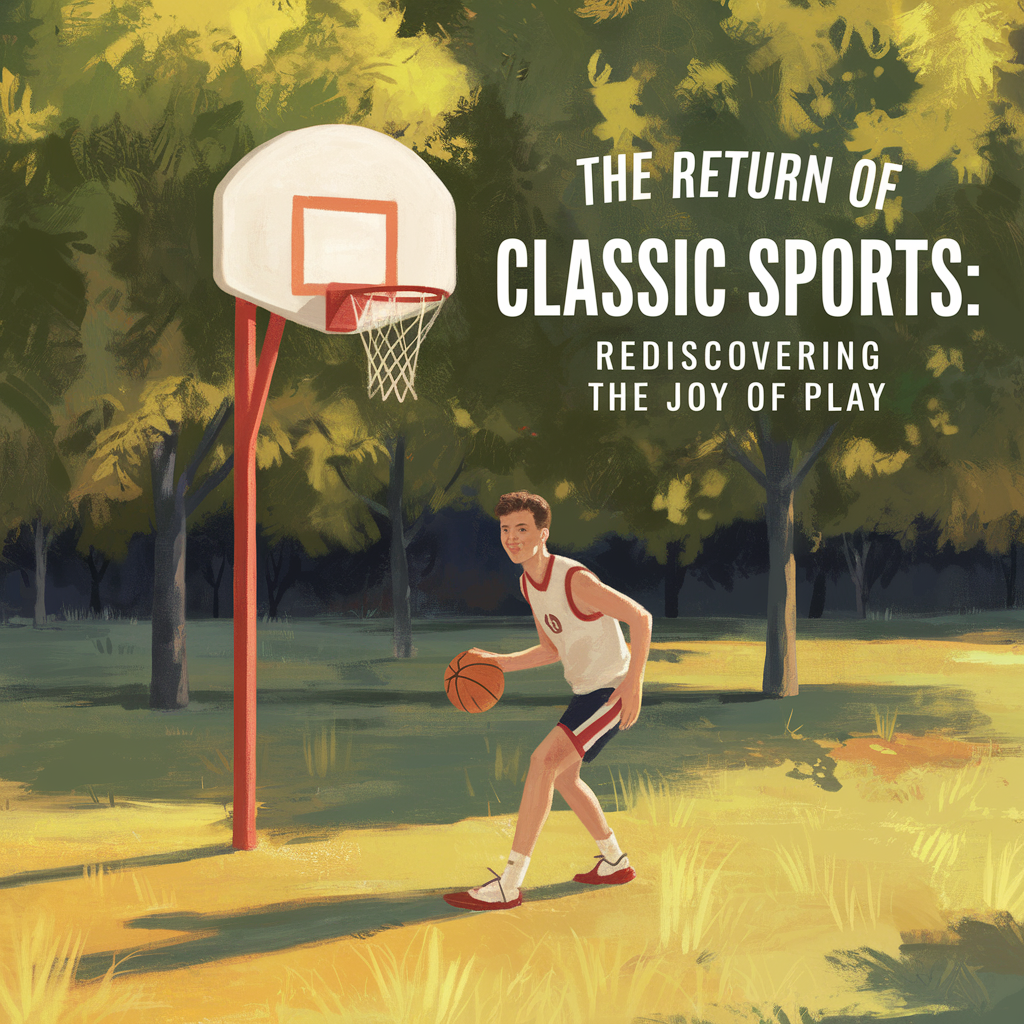The Return of Classic Sports: Rediscovering the Joy of Play
In an age dominated by technology and high-speed action, the revival of classic sports has emerged as a refreshing antidote to our fast-paced lives. Remember the days when a simple game of tag or a rousing match of dodgeball was all it took to bring people together? It seems we’ve gradually traded those moments of joy for screens and gadgets. Yet, increasingly, communities and individuals are finding their way back to the heart of play—rediscovering the laughter, competition, and camaraderie that classic sports can offer.
The Allure of Simplicity
Classic sports, by their very nature, are uncomplicated. They don’t require extensive training or elaborate equipment. You pick up a ball, a bat, or even just your own two feet, and you’re ready to go. It strikes me that this simplicity is precisely what is so appealing. When was the last time you felt the exhilaration of running freely down a field, wind in your hair, heart pounding? For many, it’s been far too long.
Take, for instance, the classic game of kickball—a staple of childhood playgrounds everywhere. Just a few weeks ago, I found myself at a neighborhood picnic, where a spontaneous kickball game broke out. It was as if the years melted away; adults became kids again, laughing uncontrollably as they raced around the bases. It reminded me of my own childhood, and I couldn’t help but think: why did we stop playing?
The Rise of Nostalgia
Nostalgia plays a powerful role in the resurgence of classic sports. As adults, many of us long for simpler times, and what better way to relive those days than through the sports we loved as children? According to a recent survey conducted by the National Sporting Goods Association, there has been a notable increase in participation rates for traditional games like baseball, basketball, and soccer. It appears that people are not only yearning for the past but are also actively seeking out ways to recreate those joyful experiences.
Experts suggest that engaging in these classic sports can provide a sense of belonging. “When people come together to play,” says Dr. Emily Rogers, a sociologist specializing in sports culture, “they’re not just playing a game; they’re building relationships, creating memories, and fostering community.” And let’s face it, who doesn’t want to relive the thrill of hitting a home run or sinking a game-winning shot? (I can still hear the cheers echoing in my head!)
Community and Connection
One of the most beautiful aspects of classic sports is their ability to connect people. Local leagues and community events are springing up all over the place. Take your local park, for example: it’s likely you’ll find groups of friends playing ultimate frisbee or a family setting up for a game of cornhole. These gatherings aren’t just about sports; they’re about sharing experiences and strengthening bonds.
Consider the story of the McKinney family, who turned their backyard into a mini sports complex during the pandemic. “We needed something to do to keep our spirits up,” says Laura McKinney, the matriarch of the family. “So, we started setting up games every Saturday. The kids loved it, and we found ourselves laughing more than we had in years.” They played everything from badminton to three-legged races, and it transformed not just their weekends, but their family dynamic.
The Benefits of Play
Let’s not overlook the physical and mental health benefits of engaging in classic sports. It’s well-known that regular physical activity can help reduce stress, improve mood, and boost overall well-being. Classic sports often incorporate teamwork and social interaction, which can further enhance these benefits. Some studies suggest that playing team sports can lead to better emotional resilience and improved self-esteem.
Moreover, the joy of play is contagious. When you see others enjoying themselves, it encourages you to join in. You might even find yourself laughing at the sheer absurdity of your attempts to master that elusive jump shot or perfect that soccer kick. It’s liberating to embrace the fun without the pressure of competition. (I mean, who really cares if you miss a goal when you can blame it on the wind, right?)
Classic Sports in Schools
Interestingly, schools are also beginning to recognize the value of classic sports. Physical education programs are revisiting traditional games, allowing students to experience the joy of play that many of us grew up with. Schools in various regions are reintroducing games like capture the flag and hopscotch, promoting not just fitness, but also teamwork and social skills among students.
“We’ve seen a noticeable improvement in student engagement and camaraderie,” states Principal Jessica Hartman of Maplewood Elementary. “Kids are excited to participate in these classic games. They’re learning the value of teamwork and having a blast while doing it.” It’s heartening to see educational institutions embracing the idea that play is an essential part of learning and development.
Technology and Classic Sports
Now, you might be thinking, “But what about technology?” It’s true that technology has often been blamed for keeping kids indoors and glued to screens. However, there is a silver lining. Many communities are utilizing social media and apps to organize and promote classic sports events, making them more accessible to a broader audience. Platforms like Meetup and Facebook groups have sprung up, connecting enthusiasts of all ages to foster participation in classic sports.
For instance, the “Backyard Olympiad” event I attended last summer was coordinated through a local Facebook group. It brought together families in the neighborhood for a day of nostalgic games—think potato sack races and tug-of-war. It was a delightful mix of laughter, competition, and community spirit, all organized with the help of a smartphone. Who would have thought that our devices could be used to encourage outdoor play?
Rediscovering the Joy of Play
So, how do we fully embrace the return of classic sports? The key lies in allowing ourselves to rediscover the joy of play. It’s about letting go of perfection and embracing the fun. Here are a few suggestions to get you started:
- Organize a neighborhood game day—invite friends and family for some friendly competition.
- Try teaching a classic game to the younger generation—show them what you loved about it.
- Join a local league or club that focuses on classic sports—you might meet some wonderful people.
- Encourage schools to incorporate more classic games into their physical education curriculum.
- Don’t be afraid to get silly—embrace the laughter and lightheartedness that comes with play.
With these ideas in mind, we can all play a part in not just reviving classic sports, but also in fostering a culture that values the joy of play. After all, it’s not just about the score or the trophy; it’s about the smiles, the friendships, and the memories created along the way.
Conclusion: A Call to Action
As we navigate the complexities of modern life, the return of classic sports serves as a reminder of the importance of play. It’s an invitation to step outside our comfort zones, to reconnect with our inner child, and to experience life in its simplest, most joyful form. Whether you’re dusting off your old baseball glove, reviving a game of kickball, or teaching your kids how to play hopscotch, remember that the essence of sports lies not in the competition, but in the joy of participation.
So, grab that ball, gather your friends, and rediscover the pleasure of playing. Who knows? You might just find that the joy of play is exactly what you’ve been missing. And hey, maybe you’ll even spark a little nostalgia in someone else along the way.









